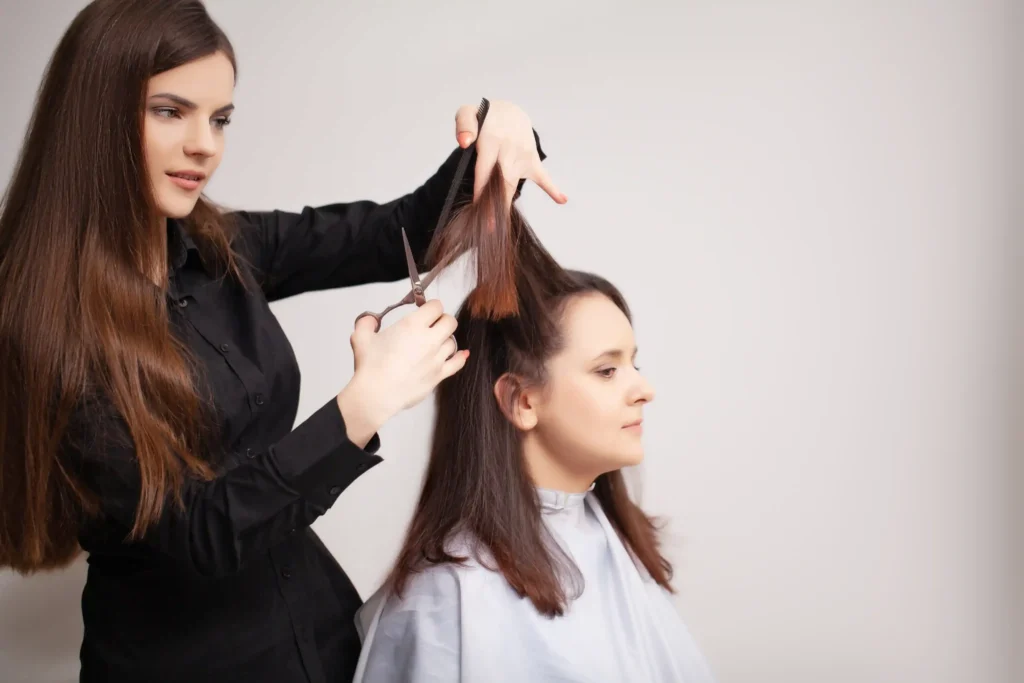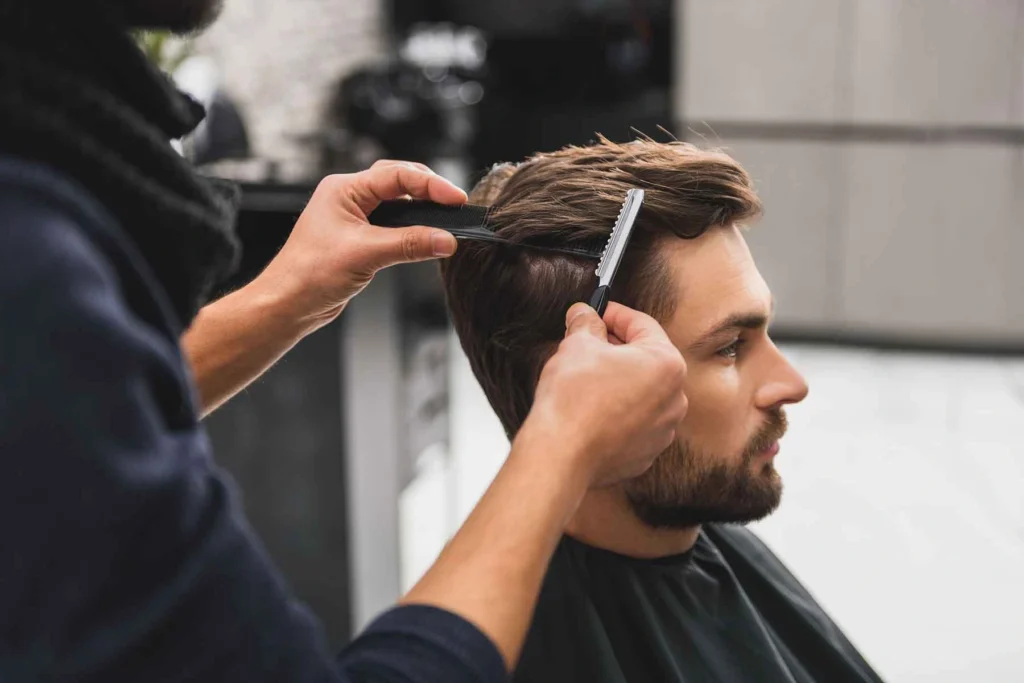Why Do Hair Stylists Always Wear Black? The Real Reason Behind the Dress Code
If you’ve ever visited a salon, whether for a quick trim, bold new color, or a complete makeover, you’ve probably noticed something consistent: the stylists are almost always dressed in black. At first glance, it might seem like a fashion choice or an unspoken rule among beauty professionals. But look closer, and you’ll realize there’s a deeper reason behind this stylistic uniform. So, the question arises: Why do hair stylists wear black?
At Silvie Hair Studio, this tradition is more than just aesthetic; it’s a blend of practical necessity, professional branding, and client-centered thinking. Black attire plays a surprisingly crucial role in the stylist’s daily workflow, appearance, and relationship with clients. Below, we explore the reasons behind this enduring dress code and how it reflects the values and professionalism of modern salons like Silvie.
Why Do Hair Stylists Wear Black?

Practical Benefits of Wearing Black
Hairdressing is a messy, hands-on profession. Stylists deal with hair dye, bleach, toners, oils, sprays, and heat tools daily, any of which can cause accidental spills or stains. When wearing lighter-colored clothing, even the smallest mishap could become highly visible and disrupt the stylist’s polished look. Black clothing, however, conceals stains effortlessly, allowing stylists to maintain a clean, put-together appearance no matter how chaotic their day gets.
But it’s not just about messes; black is the workhorse of the stylist’s wardrobe. It’s available in every size, style, and price range, making it easy for professionals to build a reliable, durable uniform collection. Stylists don’t have to worry about coordinating outfits every morning, which means more time to focus on clients and less time stressing about fashion logistics.
What is the Significance of Wearing Black?
Enhances Client Experience
One of the often-overlooked reasons behind black attire is how it enhances the client’s visual experience. In a salon setting, mirrors are everywhere. Clients spend much of their appointment watching their transformation unfold in real time. A stylist’s black clothing serves as a neutral, distraction-free backdrop that allows the client’s hair to take center stage.
Whether you’re showcasing rich brunette tones, vibrant reds, icy blondes, or pastel purples, black allows those hues to stand out with greater clarity. It also improves the stylist’s ability to assess how colors look under lighting. A brightly colored or patterned shirt could distort perception and draw attention away from the hair. In contrast, black provides consistency and visual balance, enhancing the stylist’s precision and attention to detail.
Professionalism and Branding
Uniformity in dress communicates unity, discipline, and expertise. When an entire team of stylists is dressed in black, it projects an image of cohesion and professionalism, exactly what clients want when trusting someone with their appearance. At Silvie Hair Studio, black uniforms reinforce the studio’s commitment to excellence, elegance, and brand identity.
Think of it like a visual signature: black clothing becomes part of the brand’s DNA. It signals reliability, sets the tone for the salon’s environment, and builds trust with clients. Whether someone is visiting for the first time or returning for their monthly refresh, the consistency of black attire provides reassurance and raises the perception of high-quality service.
Fashion and Aesthetic Advantages
It’s no secret that black is always in style. It’s universally flattering, slimming, and elegant. It works with every skin tone, every hair color, and every accessory. In a profession where appearance and presentation matter, black allows stylists to appear current, fashionable, and confident qualities that clients expect in someone shaping their personal look.
And while stylists often have bold personal tastes and creative flair, black gives them a canvas to subtly express themselves without overwhelming the workplace aesthetic. Through textures, layers, shoes, jewelry, and cuts, stylists at Silvie Hair Studio can maintain individuality while staying aligned with the studio’s elevated image.
Balancing Creativity with Discipline
Hairstylists are artists at heart, often full of creativity, personality, and flair. But in a professional salon setting, that creativity must be channeled and balanced. The black dress code provides a framework that encourages self-expression without overshadowing the client’s experience or disrupting the salon’s unified image.
By embracing this simple but powerful standard, stylists show that they can be both individual and disciplined, stylish and professional. The result is a salon atmosphere that feels focused, intentional, and welcoming to every client who walks through the door.
Take the First Step Toward Becoming a Professional Stylist

If you’re inspired by the professionalism and passion behind the black wardrobe, it might be time to step into the world of beauty and hairstyling yourself. At Silvie Hair Studio, we offer more than just high-end salon services; we also train the next generation of elite stylists.
Our Hair Extension Classes are led by experienced professionals who understand both the art and the business of hair. You’ll learn cutting-edge techniques in cutting, coloring, styling, and client care in a real salon setting that prepares you for long-term success. With a curriculum rooted in creativity, discipline, and professionalism, you’ll gain the tools you need to thrive in any salon. Black may be the uniform, but your future will be nothing short of colorful.
Enroll today at Silvie Hair Studio and take your first step toward a rewarding, stylish, and inspiring career.
Reach us through our pages below:
Check out our articles to help with your stylist journey:
How Do You Become a Hairstylist








